Hyundai i10 vs Suzuki Vitara – Performance, range & efficiency compared
Both models have their strengths – but which one suits you more?
Compare performance, efficiency, price and space directly: Hyundai i10 or Suzuki Vitara?
Costs and Efficiency:
Price and efficiency are often the first things buyers look at. Here it becomes clear which model has the long-term edge – whether at the pump, the plug, or in purchase price.
Hyundai i10 has a clearly advantage in terms of price – it starts at 14600 £, while the Suzuki Vitara costs 23600 £. That’s a price difference of around 9009 £.
Fuel consumption also shows a difference: Hyundai i10 manages with 4.90 L and is therefore minimal more efficient than the Suzuki Vitara with 5 L. The difference is about 0.10 L per 100 km.
Engine and Performance:
Power, torque and acceleration say a lot about how a car feels on the road. This is where you see which model delivers more driving dynamics.
When it comes to engine power, the Suzuki Vitara has a evident edge – offering 129 HP compared to 90 HP. That’s roughly 39 HP more horsepower.
In acceleration from 0 to 100 km/h, the Suzuki Vitara is noticeable quicker – completing the sprint in 9.50 s, while the Hyundai i10 takes 11.40 s. That’s about 1.90 s faster.
In terms of top speed, the Suzuki Vitara performs slight better – reaching 190 km/h, while the Hyundai i10 tops out at 175 km/h. The difference is around 15 km/h.
There’s also a difference in torque: Suzuki Vitara pulls clearly perceptible stronger with 235 Nm compared to 172 Nm. That’s about 63 Nm difference.
Space and Everyday Use:
Whether family car or daily driver – which one offers more room, flexibility and comfort?
Both vehicles offer seating for 5 people.
In curb weight, Hyundai i10 is clearly perceptible lighter – 996 kg compared to 1255 kg. The difference is around 259 kg.
In terms of boot space, the Suzuki Vitara offers clearly perceptible more room – 375 L compared to 252 L. That’s a difference of about 123 L.
In maximum load capacity, the Suzuki Vitara performs slight better – up to 1120 L, which is about 70 L more than the Hyundai i10.
When it comes to payload, Hyundai i10 hardly perceptible takes the win – 423 kg compared to 395 kg. That’s a difference of about 28 kg.
Who comes out on top?
Overall, the Suzuki Vitara shows itself to be outperforms in nearly all aspects and secures the title of DriveDuel Champion.
It convinces with the more balanced overall package and proves to be the more versatile choice for everyday use.
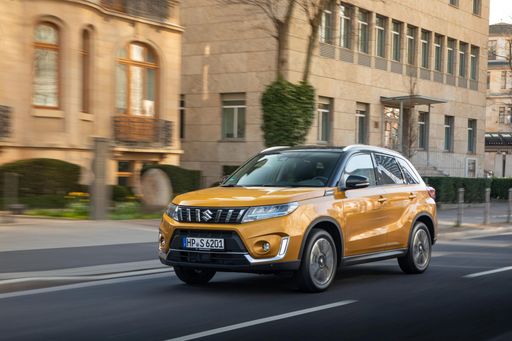
Suzuki Vitara
Hyundai i10
The Hyundai i10 impresses with its compact design, making it an ideal choice for navigating through busy urban environments. Its interior is surprisingly spacious, offering drivers and passengers comfort beyond what one might expect from a city car. The model combines efficiency and practicality, making it an attractive option for those seeking both economy and functionality in their daily commute.
details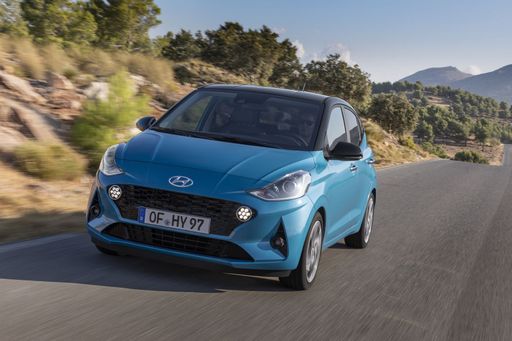 @ hyundai.news
@ hyundai.news
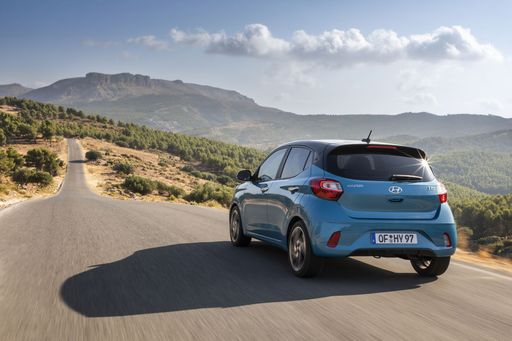 @ hyundai.news
@ hyundai.news
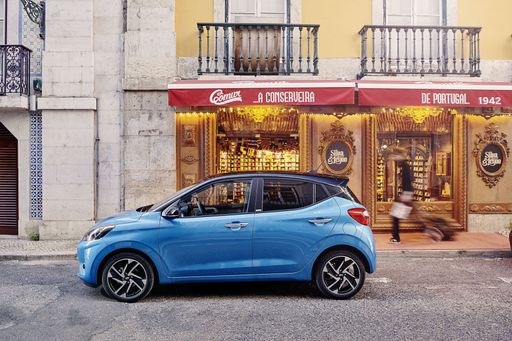 @ hyundai.news
@ hyundai.news
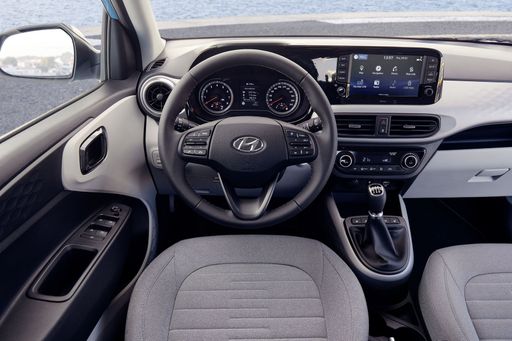 @ hyundai.news
@ hyundai.news
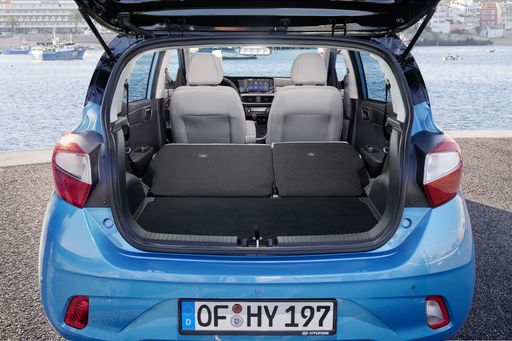 @ hyundai.news
@ hyundai.news
Suzuki Vitara
The Suzuki Vitara impresses with its compact design and robust stance, making it ideal for both urban and off-road adventures. Its sleek lines and modern aesthetics ensure it stands out on the road, complemented by a comfortable and high-tech interior. The Vitara offers a smooth and engaging driving experience, combining efficiency with practicality.
details @ Suzuki
@ Suzuki
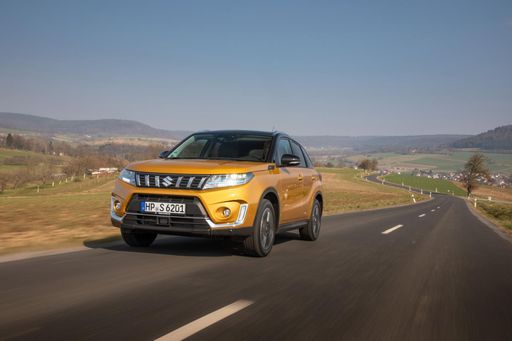 @ Suzuki
@ Suzuki
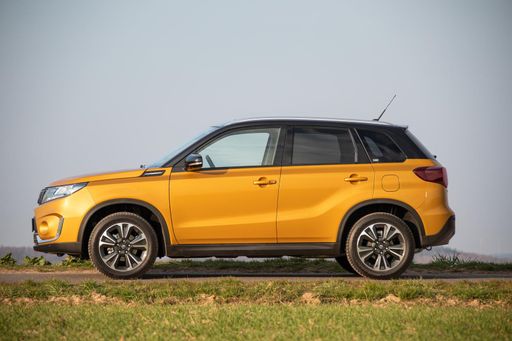 @ Suzuki
@ Suzuki
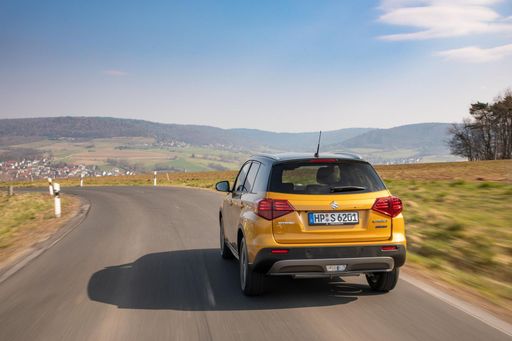 @ Suzuki
@ Suzuki
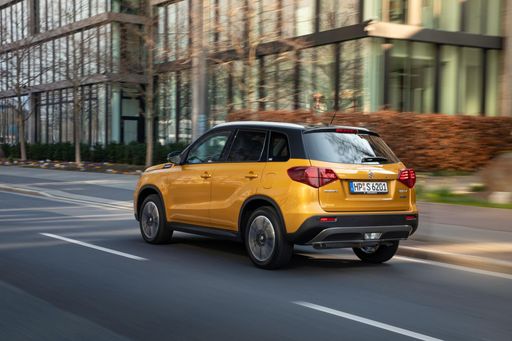 @ Suzuki
@ Suzuki
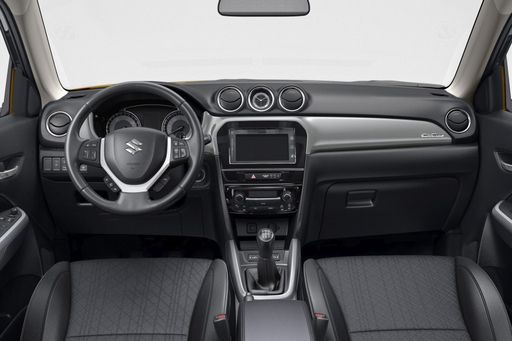 @ Suzuki
@ Suzuki

|

|
|
|
|
Costs and Consumption |
|
|---|---|
|
Price
14600 - 19000 £
|
Price
23600 - 30900 £
|
|
Consumption L/100km
4.9 - 5.5 L
|
Consumption L/100km
5 - 5.6 L
|
|
Consumption kWh/100km
-
|
Consumption kWh/100km
-
|
|
Electric Range
-
|
Electric Range
-
|
|
Battery Capacity
-
|
Battery Capacity
-
|
|
co2
110 - 124 g/km
|
co2
113 - 129 g/km
|
|
Fuel tank capacity
36 L
|
Fuel tank capacity
47 L
|
Dimensions and Body |
|
|---|---|
|
Body Type
Hatchback
|
Body Type
SUV
|
|
Seats
4 - 5
|
Seats
5
|
|
Doors
5
|
Doors
5
|
|
Curb weight
996 - 1099 kg
|
Curb weight
1255 - 1395 kg
|
|
Trunk capacity
252 L
|
Trunk capacity
289 - 375 L
|
|
Length
3670 - 3675 mm
|
Length
4185 mm
|
|
Width
1680 mm
|
Width
1775 mm
|
|
Height
1480 - 1483 mm
|
Height
1595 mm
|
|
Max trunk capacity
1050 L
|
Max trunk capacity
1046 - 1120 L
|
|
Payload
344 - 423 kg
|
Payload
375 - 395 kg
|
Engine and Performance |
|
|---|---|
|
Engine Type
Petrol
|
Engine Type
Petrol MHEV, Full Hybrid
|
|
Transmission
Manuel, Automatic
|
Transmission
Manuel, Automatic
|
|
Transmission Detail
Manual Gearbox, Automated Manual
|
Transmission Detail
Manual Gearbox, Automated Manual
|
|
Drive Type
Front-Wheel Drive
|
Drive Type
Front-Wheel Drive, All-Wheel Drive
|
|
Power HP
63 - 90 HP
|
Power HP
116 - 129 HP
|
|
Acceleration 0-100km/h
11.4 - 18.4 s
|
Acceleration 0-100km/h
9.5 - 12.7 s
|
|
Max Speed
143 - 175 km/h
|
Max Speed
180 - 190 km/h
|
|
Torque
93 - 172 Nm
|
Torque
235 Nm
|
|
Number of Cylinders
3 - 4
|
Number of Cylinders
4
|
|
Power kW
46 - 66 kW
|
Power kW
85 - 95 kW
|
|
Engine capacity
998 - 1197 cm3
|
Engine capacity
1373 - 1462 cm3
|
General |
|
|---|---|
|
Model Year
2024
|
Model Year
2024
|
|
CO2 Efficiency Class
C, D
|
CO2 Efficiency Class
D, C
|
|
Brand
Hyundai
|
Brand
Suzuki
|
Is the Hyundai i10 offered with different drivetrains?
The Hyundai i10 is offered with Front-Wheel Drive.
The prices and data displayed are estimates based on German list prices and may vary by country. This information is not legally binding.
